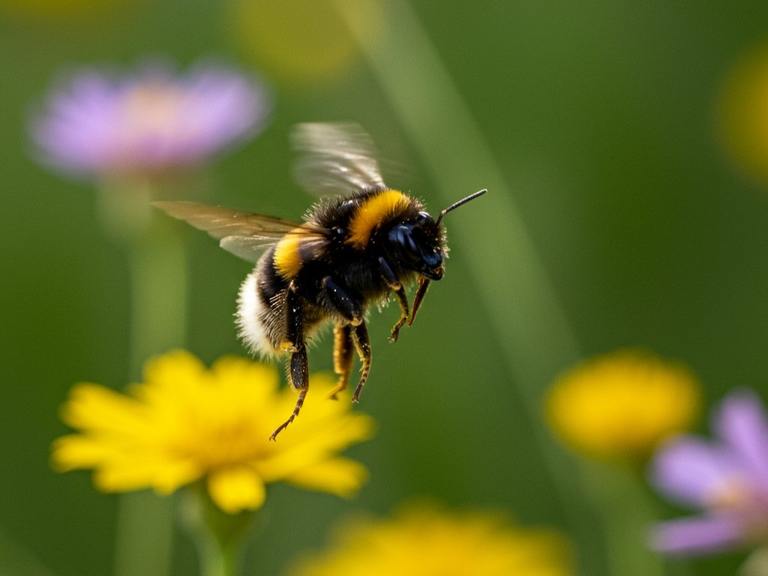Bees vs Hornets: What's the Difference, and Do Bumble Bees Sting?
Published: August 1, 2025

Introduction
When it comes to stinging insects, few inspire more confusion and anxiety than bees and hornets. While both can deliver a painful sting, their differences go far beyond their defense mechanisms. Understanding the distinctions between bees and hornets is essential for managing outdoor spaces safely and sustainably — especially in pest-prone areas like Florida, Texas, and South Carolina.
In this in-depth guide, we'll explore the key differences between bees and hornets, answer the pressing question "do bumble bees sting?", and dive into why knowing the answer matters more than you might think.
From garden-friendly pollinators to aggressive nest defenders, bees and hornets play vastly different roles in our environment. While bees are often celebrated for their critical contribution to pollination, hornets typically make headlines for their painful stings and defensive aggression.
However, not all bees are as harmless as they appear, and not all hornets are villains. That's why one of the most searched questions online — "do bumble bees sting?" — deserves a thorough and accurate answer.

Bees vs Hornets: Overview
Bees and hornets are both members of the Hymenoptera order, which also includes ants and wasps. However, hornets are a subset of wasps and are quite different in behavior, physical characteristics, and roles in the ecosystem compared to bees.
| Feature | Bees | Hornets |
|---|---|---|
| Body Structure | Fuzzy, rounder bodies | Smooth, slender bodies |
| Color | Brown/yellow with black | Black/white or black/yellow |
| Aggression | Typically non-aggressive | Highly aggressive |
| Sting | Single sting (honeybee) | Multiple stings possible |
| Nesting Location | Ground, trees, walls | Trees, shrubs, buildings |
| Pollination Role | Crucial | Minimal |
Bee Species and Behavior
There are over 20,000 species of bees worldwide, but some of the most common include:
- Honeybees (Apis mellifera)
- Bumble bees (Bombus spp.)
- Carpenter bees (Xylocopa spp.)
Bumble bees are especially noteworthy due to their large, fuzzy appearance and gentle temperament — but do bumble bees sting? More on that shortly.
Bees tend to be social creatures, often living in colonies or hives. Most are not aggressive unless provoked and typically sting only in self-defense.
Hornet Species and Behavior
Hornets are a type of large wasp and are far more aggressive than most bees. In the U.S., the most concerning species include:
- European hornets (Vespa crabro)
- Asian giant hornets (Vespa mandarinia)
- Yellow-legged hornets (Vespa velutina)

These invasive hornets prey on bees and other insects and are known for fiercely defending their nests. Unlike bees, hornets can sting repeatedly, making them particularly dangerous to humans and pets.
Do Bumble Bees Sting?
Yes, bumble bees can sting, but they rarely do. This question — "do bumble bees sting?" — often comes from a place of concern, especially among gardeners and parents. Bumble bees are generally docile and avoid confrontation.
However, female bumble bees (queens and workers) are equipped with a stinger and will use it if threatened. Unlike honeybees, bumble bees do not die after stinging because their stingers are smooth and do not detach from their bodies.
When Do They Sting?
- If their nest is disturbed
- If they are trapped or swatted at
- In defense of their colony
So while the answer to "do bumble bees sting?" is yes, the likelihood of being stung is low unless you're perceived as a threat.
Differences in Nesting and Territory
Understanding the nesting habits of bees and hornets helps in safe removal and management.
Bumble Bees:
- Nest in ground cavities, old rodent holes, or thick grass
- Colonies are small (fewer than 500 bees)
- Seasonal: active mainly in spring/summer

Hornets:
- Build large, paper-like nests in trees, shrubs, or buildings
- Colonies can exceed 1,000 members
- Extremely territorial and aggressive if disturbed
Disturbing a hornet nest can provoke a coordinated attack. Bees, particularly bumble bees, are far less likely to chase after you.
Pollination and Ecosystem Impact
Bees, especially native species like bumble bees, are essential to plant reproduction and food production. A staggering one-fifth of North America's native pollinators are at elevated risk of extinction.
Hornets, while also predators of some pests, do not significantly contribute to pollination. In fact, their predation on beneficial insects can upset ecological balances.
Human Safety and Pest Control
Bumble Bees:
- Low threat unless nest is disturbed
- Do not seek to sting humans
- Often safe to relocate
Hornets:
- High risk if nesting near human activity
- Multiple stings can trigger allergic reactions
- Professional extermination recommended
If you’re dealing with either species, understanding the behavior is crucial. While a lone bumble bee in your garden might be ignored or safely observed, a hornet nest near your porch should raise immediate concern.
Managing Infestations Safely
Whether it’s bees or hornets, dealing with a nest should always be approached with caution — and preferably with professional help.
Best Practices:
- Identify the species before taking action
- Do not spray or knock down nests without expertise
- Call professionals trained in humane bee relocation or pest control
For those in Florida, Texas, or South Carolina, All "U" Need Pest Control provides safe, effective, and eco-conscious pest management solutions. We handle everything from wasp removal to mosquito control and termite protection.
For more insight into best practices, view the SC Department of Agriculture’s latest bulletin.
Conclusion
Understanding the difference between bees and hornets is more than an academic exercise — it’s about safety, conservation, and responsible pest control.
So, do bumble bees sting? Yes, but they’re unlikely to unless provoked. Hornets, on the other hand, are highly aggressive and more dangerous.
Before taking matters into your own hands, contact a licensed pest control expert to assess and address any infestation. Protecting pollinators while ensuring human safety is not only possible — it's essential.